





Fracture of fibula
Shin fractures, in particular fractures big and fibula, are one of the most widespread injuries of the lower extremities.
 Fibula is a shin component. Depending on the directing blow and a type of damage the fracture of fibula is quite often combined together with a fracture of tibia. If to consider the nature of a fracture, then it can be divided on direct and indirect. The direct, or bumper blow, is considered more favorable as will much easier respond to treatment. Besides, after a fracture of fibula by means of a direct factor there is no set of splinters when crushing a skeleton.
Fibula is a shin component. Depending on the directing blow and a type of damage the fracture of fibula is quite often combined together with a fracture of tibia. If to consider the nature of a fracture, then it can be divided on direct and indirect. The direct, or bumper blow, is considered more favorable as will much easier respond to treatment. Besides, after a fracture of fibula by means of a direct factor there is no set of splinters when crushing a skeleton.
The indirect factor is more adverse. There is such change when at the direction of damage along an axis of a bone there is a rotation (traction). After a fracture of fibula of an indirect factor there is a set of splinters in the direction of impact of blow. Damage arises on a spiral, occupying big sites of structure of a leg.
Elementary falling or blow can be the cause of a fracture of fibula. Similar changes in the period of ice are especially often observed in the winter. Quite often similar changes happen together with a tibial bone. However the tibial bone stronger and if it is not broken, treatment will be more reliable and bystry. Besides, the possibility of development of various complications significantly decreases: osteomyelitis, shift of bone fragments, etc.
Symptoms of a fracture of fibula
It is rather easy to define a fracture of fibula. First of all, a symptom of a fracture of fibula is the visible shift of bones. The victim feels severe pain in attempt to lean on a sore leg. Because of a bruise the leg strongly swells, there are hematomas. Visually the leg can seem is shorter, can be twisted in relation to a healthy leg. If the axis at a change is not displaced, then the victim can carry out rotary motions. If there was a fracture only of one fibula, then the victim can even lean on a sore leg a little.
Diagnosis of a change
That the doctor could define precisely the nature of a fracture, the patient has to tell how there was an injury. The doctor estimates blow force, than it was put and in what party striking power was applied. Properties of a change directly depend on all these indicators.
To receive a full picture of an event, the doctor does a x-ray film in two projections. As a rule, diagnosis of a fracture of fibular bone does not represent big complexity. The doctor can experience some difficulties if there were various complications or when the change is localized in an intertibial joint. If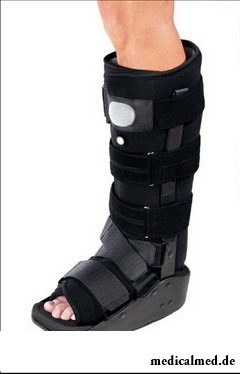 the change happened in an upper third of a shin, then the doctor should consider that blood supply and an innervation of this site quite often suffers from it.
the change happened in an upper third of a shin, then the doctor should consider that blood supply and an innervation of this site quite often suffers from it.
Treatment of a fracture of fibula
If there was a change without shift, then treatment of a fracture of fibula does not present special difficulties. Even if there is a simultaneous fracture of tibia, changes without shift will easier respond to treatment. The doctor imposes gypsum, since finger-tips of a leg and to that place which needs to be immobilized. It is necessary for prevention of shift of bone fragments.
If the blow was resulted by the shift of bone fragments, especially, if there was a shift of both bones, then first of all the doctor needs to redeem their correct situation. At cross blows imposing of bone plates can be required. If shift resulted not from cross blow, then perhaps implementation of spokes is a little higher and lower than the place of a change. These spokes fix and stretch the place of recovery.
Terms of recovery of a fracture of fibula depend on complexity of a change. On average, recovery demands two-three months. Usually bone callosity is formed only one and a half months later after a change. If the change is complicated by the shift of bones, then on rehabilitation about half a year also can be required more. The recovery period in many respects depends on the patient. It has to carry out accurately muscular exercises, visit massage and physiotherapy, and also to make thrifty use of the place of an injury.
At regular visit of a sunbed the chance to develop a carcinoma cutaneum increases by 60%.

You are office worker, the driver, the fan of winter sports or do not think of life without bicycle? You conduct a slow-moving image жизн...
Section: Articles about health
The advantage of swimming for the person is so high that this sport is not only the most popular, but also is widely applied in medicine and rehabilitation processes. If you look for for yourself the occupation allowing pleasantly and to spend time, then swimming with advantage...
Section: Slideshow
Many parents of children at the age of 2-4 years face excessively whimsical behavior of the child. The kid exhausts constant crying and whims not only the parents, but also himself. In what the reasons of children's whims. And how to fight with them?...
Section: Slideshow
About 10-15 years ago existence of the computer in the apartment of the Russian was considered as a rarity and office rooms were only on перв...
Section: Articles about health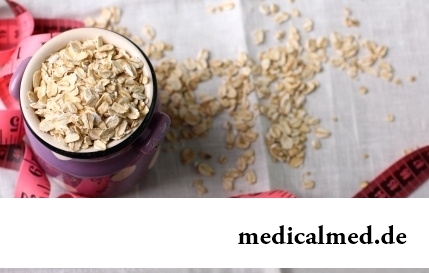
The list of stereotypes of which, apparently, all know strongly includes following: British surely eat porridge for breakfast. Perhaps, not all modern residents of Britain arrive quite so, but for those from them which continue to follow this t...
Section: Articles about health
It would seem, to buy drugs in Moscow does not make a problem – a drugstore, and not one, is available for each resident of the capital within walking distance. And, nevertheless, Internet drugstores become more popular – what it is possible to explain such phenomenon with? Actually there is a lot of reasons and if to formulate them it is short, then the most suitable word will be - "conveniently". We suggest to get acquainted in more detail with pluses and minuses of online drugstores that buying drugs, not to make the wrong choice....
Section: Articles about health
Very often as a source of the infection which caused a disease serves our house - the place which a priori has to be safe. However...
Section: Articles about health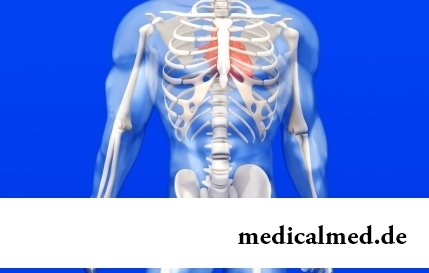
For many women the word "fat" sounds as a sentence. In aspiration to an ideal figure they try to exclude, first of all, from the menu all dishes containing fats without having at the same time a clear idea of a role of these substances in exchange processes, and about an afterbirth...
Section: Articles about health
For residents of the countries of Southeast Asia various algas are an obligatory component of a daily diet. Their popularity is connected not only with high tastes, but also with numerous curative properties. Russians are a little familiar with products such that is distressing: algas are so useful that they should be eaten as often as possible. Let's get acquainted closer with useful properties of this seafood....
Section: Articles about health
Women quite often suffer from complexes concerning the sizes of the bust. Strangely enough, reason душевног...
Section: Articles about health
Stability of a hormonal background is one of the most important conditions of preservation of health of the woman. At the same time endocrine system – the thin device extremely sensitive to any external influences. Changes of an image жиз can become the reason of hormonal failure...
Section: Articles about health
Smoking not only exerts a negative impact on the state of health of the consumer of tobacco products, but is an air polluter the substances potentially dangerous to people around. In recent years significantly the number of the people aiming to get rid of an addiction increased. Business this difficult: having left off smoking, the person immediately begins to suffer from abstinence. Besides, many yesterday's smokers feel at first great disappointment as улучш...
Section: Articles about health
On the head of the person about one million hair follicles, or as they are called still, hair bulbs are located. At the moment he is born...
Section: Articles about health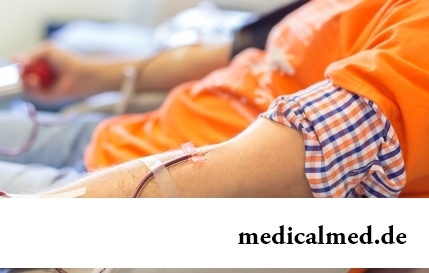
Transfusion of donor blood has almost century history. In spite of the fact that this procedure is quite usual for many people, process of blood donation is still surrounded with numerous myths. Today we aimed to discredit the most widespread of them....
Section: Articles about health
According to data of World Health Organization, the cataract is diagnosed almost for 7% of the population of Earth. The statistics of incidence is considered not full as at an initial stage the illness, as a rule, does not cause to the person of special inconveniences, and many diseased sees doctors not at once. The cataract is not only one of the most widespread ophthalmologic illnesses, but also the reason of a half of cases of loss of sight....
Section: Articles about health
At this plant there are a lot of names: tuberiferous sunflower, Jerusalem artichoke, solar root, earth pear. Contrary to spread...
Section: Articles about health
It is impossible to imagine human life in which there would be no plants. Practically in each apartment and any production room there are window plants, millions of people with pleasure are engaged in gardening and truck farming, many citizens пр...
Section: Articles about health
The summer of this year in Russia was very ambiguous. Regions suffered from a merciless heat, from pouring rains, the hail from time to time dropped out, then there was again a heat which alternated with rainfall again. Many people suffer from such sharp changes of weather. Even flu epidemics and a SARS were recorded....
Section: Articles about health
Neurosis is called pathology of a nervous system at which deviations in functioning of the highest nervous processes are observed. Nye...
Section: Articles about health
Statistically, pathologies of a thyroid gland in the world more than 500 million people have. Failures in work of this body lead to heavy disbolism, development of heart diseases, vessels, a reproductive and nervous system. In hard cases excessive...
Section: Articles about health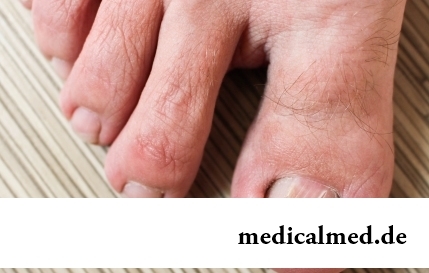
The word "onikhokriptoz" is unfamiliar to most of people, meanwhile quite so physicians call very widespread problem: the growing of edge of a nail into surrounding fabrics causing inflammatory process. Usually the illness affects thumbs of legs, and is followed by reddening, hypostasis, and in the started cases – release of pus. Patients complain of the pain amplifying when walking, problems with the choice of footwear....
Section: Articles about health
Memory is an ability of the central nervous system to fix, keep and as necessary to reproduce information on knowledge...
Section: Articles about health
A lot of things depend on a condition of a backbone in a human body, a backbone - not only a support for a body, it also a receptacle for a spinal cord, that is why malfunctions with a backbone are so dangerous. To treat rachis diseases very difficult and long...
Section: Articles about health
Climax - process of fading of reproductive function of an organism in process of its aging. At women the main sign of its approach is the termination of a menstrual cycle. Officially the menopause is diagnosed when periods are not observed within 12 months. Age changes quite often are followed by emotional failures, disturbance of thermal control and sweating, dizzinesses and headaches, tachycardia and other unpleasant phenomena. This complex of symptoms...
Section: Articles about health
For most of the working people the problem of having a snack is particularly acute enough. Sooner or later there is a question: what is possible quickly for a sja...
Section: Articles about health
Small appetite at the child – the complaint which pediatricians should hear practically from each mother. Most often it is carried to the category of children's whims, however the refusal of food in certain cases can be to alarming symptoms therefore it cannot be ignored....
Section: Articles about health
According to doctors, more than a half of men of 25-50 years suffer from frustration of the urinogenital sphere, but the minority sees a doctor from them. And in vain - even the insignificant discomfort in the field of generative organs can serve as a symptom of an illness fraught with grave consequences for health. So - after 40 years - it is easy for most widespread disease of the sexual sphere of men to pass the first symptoms of prostatitis (weight in the bottom of a stomach, decrease in a libido), having written off for overfatigue and fatigue. Let's consider...
Section: Articles about health
